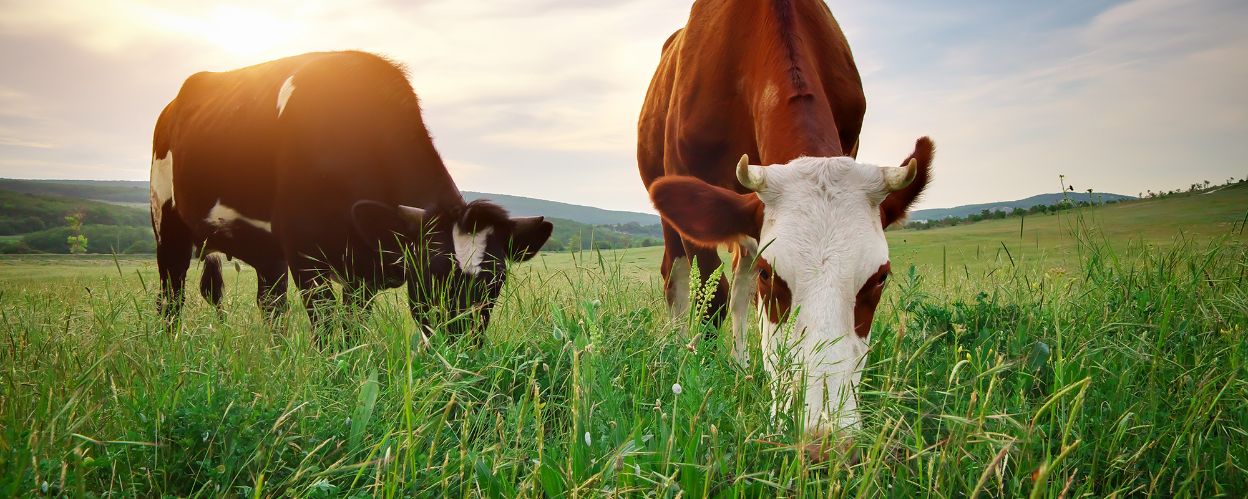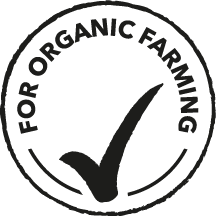
Grassland
Many meadows and pastures look lush and green from a distance. Yet appearances are often deceptive. A closer look reveals an unfavorable botanical composition, suboptimal for a high-yielding, tasty harvest. Fertilization has a direct influence on this and therefore on yield performance and forage quality, as grassland adapts to the way it is managed.
Balanced fertilization for the best forage
With fertilization, every farmer is in control of the species composition and consequently also the forage value of his meadows and pastures in the long term. Three parameters indicate success: the yield/ha, its energy content measured in MJ NEL/ha and its feed value, described by the feed value number.
- Balanced fertilization achieves the best forage and sodium ensures high forage performance and fertility.
- Potassium plays an important role in securing yields in grassland.
- Best forage quality is achieved by magnesium and sulfur.
- Manure and fermentation substrate should be supplemented with mineral fertilizers.
Grassland – balanced fertilization for healthy animals
Healthy basic feed has a particularly high nutrient requirement. This applies to all nutrients. For this very reason, it requires balanced fertilization. The requirements of animal feed must also be taken into account. Often, however, the high nutrient removal from forage areas is underestimated.
High yields and best quality of forage can only be achieved by optimal fertilization. Fertilization influences...
- yield performance
- number of utilizations
- mineral content
- botanical composition,
- protein and energy content
... and therefore the performance and fertility of the animals.
The most important nutrients for grassland
Sodium for high feed productivity and fertility
Sodium
- The basic feed must be sufficiently supplied with sodium.
- The absorption capacity of sodium chloride from supplementary feeding of cattle salt, lick block, and mineral feed is physiologically limited (risk of diarrhea).
- The K:Na ratio of max. 20:1 required by animal nutrition is rarely achieved with sodium-free fertilization.
A wide K:Na ratio in the feed leads to fertility disorders in the animals.
Magnesia kainite enriches sodium in the feed and thus improves the K:Na ratio to values lower than 20:1.
Sodium and chlorides improve the palatability of the feed, thus a higher milk yield can be realized from the basic feed.
Improving forage cation-anion difference with magnesia kainite
- Determination of forage cation-anion difference (FKAD value) is to determine the risk of occurrence of milk fever and milk cow confinement at calving.
- The FKAD value should be as low as possible during the dry period.
- The FKAD value is calculated by subtracting the sulfur and chloride content from the potassium and sodium content of the feed.
- Fertilization with magnesia kainite results in sulfur and chloride enrichment in the feed, which causes a sustained drop in the FKAD value.
Magnesium – important for plant and animal
- The basic feed must contain sufficient magnesium.
- Magnesium deficiency in the feed lowers the magnesium content in the animals' blood.
- One consequence of this is pasture tetany in ruminants.
- This danger occurs especially in spring due to young forage that is low in crude fiber and high in protein.
- The Mg supply cannot be secured from manure fertilization alone, especially in the first growths.
Sulfur – high protein content only possible with sulfur
The quality of the forage is determined by the crude protein content and the crude fiber content (digestibility). The harvest time is mainly determined by this parameter but also by the utilization direction (grazing, silage, or hay).
- The crude protein content of the basic forage is mainly influenced by the sulfur supply.
- An adequate supply of plant-available sulfur is absolutely essential.
- The use of farm-produced fertilizers depends on the proportion of clover-like plants and the use and utilization of the growth.
- The low sulfur content in manure is only 5-10% plant-available.
- The sulfur supply cannot be secured from manure fertilization alone, especially in the first growths.
- Numerous feed tests carried out by LUFA have shown that a good three quarters of all silage samples had an insufficient sulfur supply.
- Attention must be paid to an optimal N:S ratio (12:1).
A single fertilization with Magnesia-Kainit, Korn-KALI or ESTA Kieserit GRAN.covers the sulfur and magnesium supply during the growing season.
Fertilizer Recommendation for Grassland
- The nutrient content of cattle manure varies largely and the analysis of individual samples of slurry and FYM is advisable.
- The balance of potassium on forage land is usually negative because the reintroduction of nutrients via liquid manure is mostly over-estimated. Even very intensive cattle units with an RGV (large cattle unit) of 2.5 per ha risks the danger that the potassium deficit cannot be met using liquid manure only.
- Similar deficits as evident with potassium are also apparent with the nutrients magnesium, sulfur and sodium. The concentration of these nutrients are proportionally low in liquid manure.
Recommendation for soil fertilization
Fertilizer is applied in order to maintain the fertility of the soil so that its natural yield potential can be protected over the long term. This requires the maintenance of an optimal nutrient content in the soil. Nutrients removed with the harvest have to be replaced through an adequate application of fertilizer. Together with the replacement of removed nutrients adjustments have to be added for site specific losses (for example: leaching or erosion).
The total removal of a plant results from the nutrient uptake of the main.
|
Magnesia-Kainit® |
350-800kg/ha Magnesia-Kainit for pasture and grassland supplementary to liquid manure. Application at the beginning of the growing season, preferably in early spring – even on frozen but impact resistant soil land. |
|
Korn-KALI® |
350-500kg/ha Korn-KALI for areas without liquid manure application or low K contents in the soil. |
|
ESTA® Kieserit GRAN./p> |
200-400kg/ha ESTA Kieserit GRAN. for fulfilling magnesium and sulfur requirements during a high potassium supply |
Product recommendation



